Fireplaces are a great addition to any home. They provide warmth and comfort, and can even be used to cook food. There are many different types of fireplaces, including gas fireplaces. Gas fireplaces are becoming more and more popular because they are easy to use and don’t require a lot of maintenance. In this article, we will discuss how to light a gas fireplace. We will answer some common questions about lighting gas fireplaces, and we will provide some helpful tips that will make the process easier for you.
How Your Gas Fireplace Works
Before we get into how to light your gas fireplace, it is important to understand how a gas fireplace works. A gas fireplace uses a gas called propane or natural gas. This gas is stored in a tank that is connected to the fireplace. When you turn on the fireplace, the gas flows from the tank and into the fireplace. The gas then ignites and creates a flame. The flame provides heat for your home and also creates a cozy ambiance.

Check The Owner’s Manual
The first step is always to check the owner’s manual. Many gas fireplaces have a specific set of instructions that must be followed in order to avoid any accidents. If you don’t have the owner’s manual, you can usually find it online or by contacting the manufacturer directly.[1]
Once you have read and understood the instructions in the manual, you are ready to start lighting your gas fireplace!
Check The Gas Valve
The first thing you’ll want to do is check the gas valve. If it’s turned off, then you won’t be able to light your fireplace. Once you’ve checked the gas valve, make sure that there’s no debris blocking the opening. This can sometimes happen if the fireplace hasn’t been used in a while.
If everything looks clear, then go ahead and turn on the gas valve. You’ll usually find it near the bottom of the fireplace. Once it’s turned on, you should hear a hissing noise as the gas flows into the fireplace.[1]
Access The Gas Fireplace Controls
The first step is to find and identify the gas fireplace controls. In most cases, the control panel will be located on the right side of the fireplace. The control panel may be hidden behind a small door or it may be exposed.
Once you have located the gas fireplace controls, familiarize yourself with the different buttons and switches. There should be a switch that says “On” and “Off.” There may also be a knob that adjusts the flame height.[1]
Ensure The Controls Are Set To ‘Off’
The first thing you need to do is check that all the controls on your gas fireplace are turned to ‘off’. This includes the main control knob as well as any pilot light igniters.
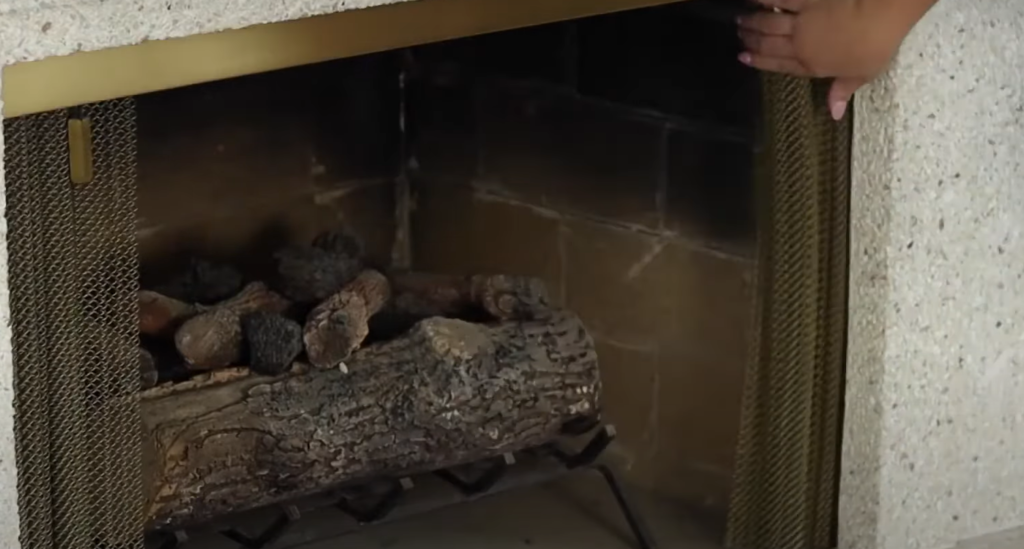
Once you’ve done this, open the glass door or screen so that you have clear access to the gas logs or burner. If your fireplace has a key, turn it to the ‘on’ position.[1]
Turn The Controls To The ‘Pilot’ Position
This is typically a small knob located near the bottom of the fireplace on the right or left side. Turning it to pilot means that you are igniting the small, constantly burning flame that will eventually light your fire.
You’ll know it’s in the pilot position when you see a tiny blue flame. If it doesn’t look like this, turn the knob back and forth until it does.[1]
Check That The Pilot Has Lit
If you have an older gas fireplace, it’s likely that the pilot is lit manually. This means that you’ll need to check whether or not the pilot is currently lit before proceeding. To do this, simply look through the small glass window on the front of your fireplace. If you see a small flame burning inside, then the pilot is already lit and you can proceed to step two. However, if you don’t see a flame, then you’ll need to light the pilot before continuing.
Assuming that your gas fireplace is equipped with an electronic ignition system, lighting the pilot is a relatively simple process. First, locate the igniter button on your control panel. This will usually be located near the bottom of the control panel or near the bottom of the fireplace itself. Once you’ve located the button, simply press and hold it down for a few seconds. You should hear a clicking sound as you do this, which is normal. After a few seconds have passed, you should see a small flame appear in the glass window on the front of your fireplace. If this happens, then congratulations! Your pilot is now lit and you can proceed to step two.[1]
If Lighting Has Failed, Try Again
If you turn on your gas fireplace and the igniter fails to light the pilot light, don’t give up. You may just need to try again. If you have an electronic ignition system, simply wait a few minutes and try again. If you have a standing pilot system, you will need to relight the pilot light manually.
Here are some tips for relighting a pilot light:
- Start by making sure that the gas valve is in the “open” position.
- Locate the pilot light assembly. This is usually located behind the glass doors of your fireplace.
- Find the igniter button and press it firmly for about 30 seconds. You should hear a clicking sound as you do this.
- If the igniter button doesn’t work, you can try using a long match or lighter to light the pilot light. Be sure to keep your hand close to the gas valve in case you need to turn it off quickly.
- Once the pilot light is lit, slowly turn on the gas valve until you hear a hissing sound. Then, turn off the igniter button.
- Enjoy your cozy fire![1]
Replace The Screen Or Cover
If your gas fireplace has a screen or cover, make sure to replace it before you begin lighting the fire. A screen or cover will help to protect you from any sparks that may fly out while you’re lighting the fire.
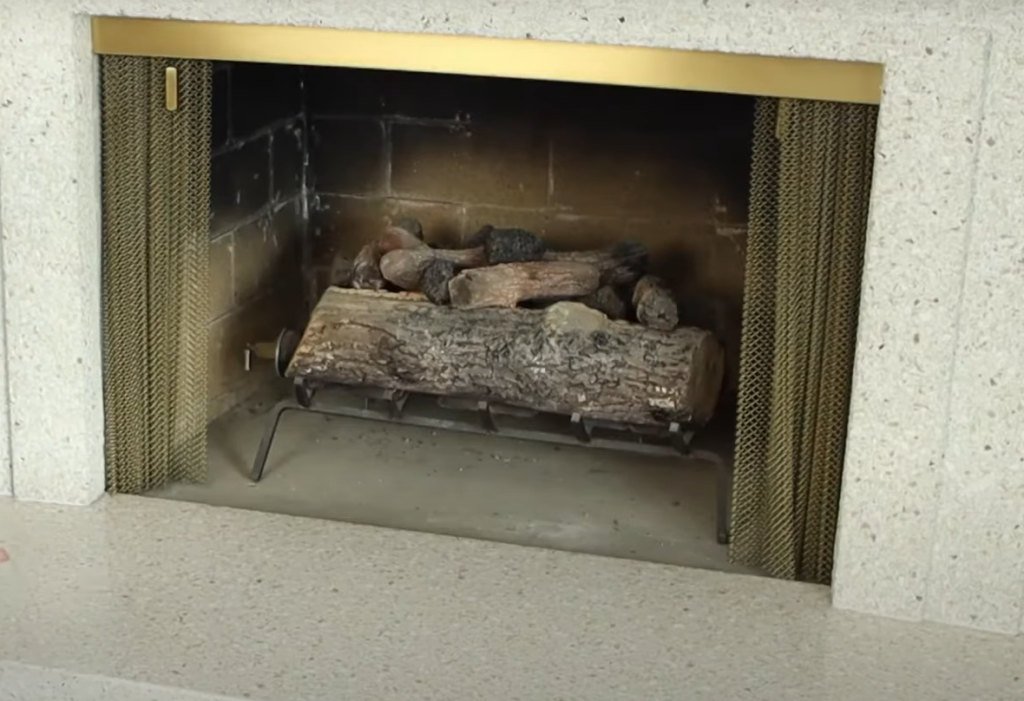
Once you have replaced the screen or cover, take a look at the gas fireplace to see if there are any obstructions in the way of the opening. If there are, be sure to remove them so that you can have a clear path to light the fire.[1]
Lighting Gas Fireplace Pilot Light Troubleshooting
If your pilot light does not stay lit, the most likely culprit is a bad thermocouple. The thermocouple is a safety device that senses whether the pilot light is lit and allows gas to flow to the burner. If it senses that the pilot light is out, it will shut off the gas flow to prevent an explosion. A bad thermocouple needs to be replaced by a qualified technician.
Another possible reason why your pilot light won’t stay lit is because of a draft coming into the fireplace.
Also, check for any cracks in the fireplace itself that might be letting in cold air.Once you have addressed these issues, try relighting the pilot light. If it still won’t stay lit, you may need to call a technician for further assistance.
Light A Gas Fireplace With A Gas Valve Fireplace Key
Step 1: Review Owner’s Manual
If you’re unsure about how to light your gas fireplace, the first step is always to review your owner’s manual. Each fireplace is different, and there may be specific instructions that are unique to your model.
Once you’ve consulted your manual, the next step is to locate the gas valve on your fireplace. The gas valve is usually located near the bottom of the unit, and it may be hidden behind a panel or door. If you can’t find it, check for a label or diagram in your owner’s manual that will show you its location.[2]
Step 2: Remove Front Panel
Depending on the model of your gas fireplace, there will either be a front panel or a glass door that needs to be removed. If there is a front panel, simply unscrew the screws or bolts holding it in place and set it aside. If there is a glass door, unlatch it from the side panels and carefully set it aside. Be careful not to touch the glass as it can get extremely hot.[2]
Step 3: Insert Key into Gas Valve
Now it’s time to actually light the fireplace. Start by inserting the key into the gas valve. If you don’t have a key, you can use a paperclip or similar object.
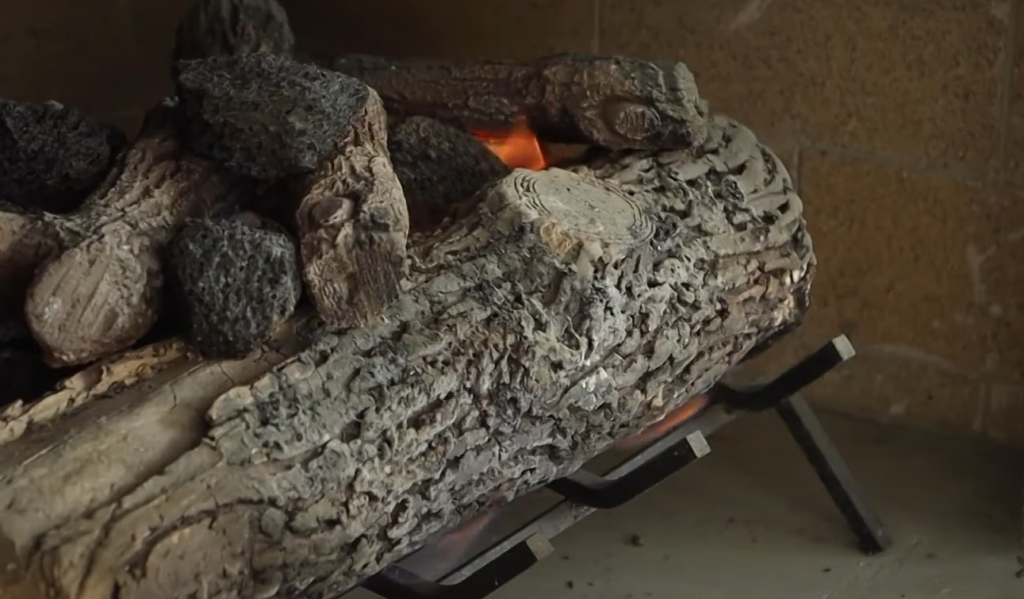
Once the key is inserted, turn it to the “on” position. You’ll know it’s in the right spot when you hear a clicking sound. Now that the gas is on, it’s time to move on to the next step.
Step 4: Light The Burner And Turn Key Counterclockwise
If your fireplace is equipped with a key, turn it counterclockwise to the “on” position. This will open the gas valve and allow gas to flow to the burner. Then, use a long match or lighter to light the burner. Start at the bottom and work your way up. Once the burner is lit, you can release the key and enjoy your warm, cozy fire!
Step 4: Replace Front Cover
Now that your gas fireplace is lit, it’s time to replace the front cover. Make sure that the cover is properly in place and secure before continuing to enjoy your cozy fire.
Light A Gas Fireplace With A Electronic Ignition
To light a gas fireplace with an electronic ignition, first, make sure the gas valve is in the “off” position. Next, locate the igniter switch and turn it to the “on” position. You should hear a clicking sound as the igniter turns on.
Finally, turn the gas valve to the “on” position and enjoy your cozy fire!What to Do if Your Gas Fireplace Won’t Start
If your gas fireplace won’t start, the first thing you should do is check to see if there is a pilot light. If there is no pilot light, then you will need to relight it. To do this, follow these steps:
- Locate the pilot light opening on your gas fireplace. This is usually located near the bottom of the firebox – where the gas logs are located.
- Insert a long match or lighter into the pilot light opening and turn on the gas valve (located just outside of the firebox) to “pilot” – you should hear a hissing sound as the gas escapes.
- Light the match or lighter and hold it near the opening for about 30 seconds until the pilot light ignites.
- Once the pilot light is lit, turn the gas valve to “on” and enjoy your cozy fire![3]
Pilot Light Operation
If your gas fireplace is equipped with a pilot light, follow these steps to relight it:
- Start by locating the pilot light. This is usually a small knob or switch near the bottom of the fireplace.
- Then, turn off the gas to the fireplace by rotating the knob to the “off” position.
- Wait at least five minutes before relighting the pilot light. This will allow any built-up gas to dissipate.
- To relight the pilot light, first hold down the knob or switch while using a lighter to ignite the flame.
- Once the flame is lit, continue holding down the knob or switch for 30 seconds to give time for gas to flow into the fireplace.
- After 30 seconds, release the knob or switch and turn the gas back on by rotating the knob to the “on” position.
- You should now see a steady flame in your fireplace. If not, repeat these steps.[4]
Continuous Pilot Ignition
If you have a continuous pilot ignition system, lighting your gas fireplace is easy. Simply push the igniter button and hold it until the pilot flame lights. Then, release the button and turn the knob to the “on” position. The main burner will ignite and your fire will be lit!

If you have an older gas fireplace, chances are it has a standing pilot ignition system. Lighting a gas fireplace with this type of system is a little more involved, but still easy to do.[4]
Intermittent Pilot Ignition (IPI)
This is the most common type of gas fireplace. An IPI gas fireplace has a standing pilot light that you must manually ignite when you want to use the fireplace. To light the pilot, follow these steps:
- Start by making sure that the gas valve is in the “Off” position.
- Locate the pilot light access panel on your gas fireplace. This is usually located behind or near the bottom of the glass front.
- Open up the access panel and find the knob for your pilot light. The knob will have a small arrow pointing in the direction of “On”.
- Turn the knob to “On” and then hold down on it for about 60 seconds. This will allow gas to flow to the pilot light.
- After 60 seconds, release the knob and then use a long match or lighter to ignite the pilot light.
- Once the pilot light is lit, you can turn on your gas fireplace by using the switch or knob near the glass front of your fireplace.[4]
Creating Cozy Ambiance: How to Light a Gas Fireplace
Lighting a gas fireplace can be a straightforward process with the right steps and materials. This table provides a comprehensive guide, including materials needed, step-by-step instructions, safety tips, and troubleshooting advice.
| Materials Needed | Step-by-Step Instructions | Safety Tips | Troubleshooting |
|---|---|---|---|
|
|
|
|
Explanation of the Table:
This comprehensive table offers a detailed guide on how to safely light a gas fireplace, along with safety tips and troubleshooting advice. It provides a list of materials needed and step-by-step instructions, ensuring a cozy and secure ambiance in your home.
FAQ
How do I get my gas fireplace to work?
If your gas fireplace is not working, the first thing you should check is the pilot light. The pilot light is usually located near the bottom of the fireplace, on the right or left side.
Does the pilot light always stay on in a gas fireplace?
No, the pilot light in a gas fireplace does not always stay on. In fact, it is recommended that you turn off the pilot light when the fireplace is not in use. This will help prevent any accidents or fires from happening.
What do you do when your pilot light won’t light?
If you’re having trouble getting your pilot light to stay lit, there are a few things you can try:
- First, make sure that the gas valve is turned on all the way. If it’s not, turn it until it clicks into place.
- Next, check the batteries in your igniter. If they’re low, replace them with fresh ones.
- If those two things don’t work, you may need to clean out your gas line. This can be done by disconnecting the gas line from the fireplace and blowing through it with a straw. Make sure to put the gas line back on before relighting your pilot light!
Can I relight the pilot light by myself?
The answer is yes, but we recommend having a certified technician relight it for you. If you do plan on relighting the pilot light by yourself, please be sure to follow all safety instructions that came with your fireplace.
How do I know if my pilot light is out?
If you have a standing pilot light, it’s easy to tell if it’s out. If the flame is extinguished, then your pilot light is out. However, if you have an intermittent pilot ignition (IPI) system, it can be more difficult to tell if your pilot light is out.
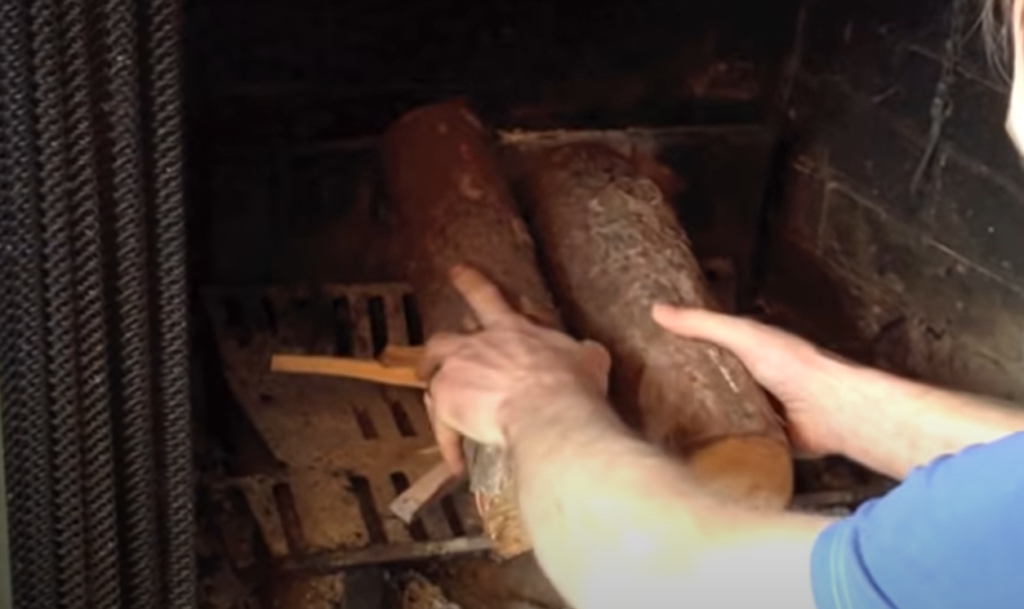
The best way to test this is to try igniting the fireplace. If the igniter clicking sound occurs but there’s no spark or flame, then your pilot light may be out.
What causes a pilot light to go out?
There are several reasons why your pilot light might go out. The most common reason is that the thermocouple, which is a metal rod that senses whether the flame is lit, has become too cool. If this happens, it will shut off the gas flow to prevent a dangerous situation. Other causes can include a strong draft from an open window or door, a clogged gas line, or simply running out of propane.
What’s the process for lighting a gas fireplace with a standing pilot light?
To light a gas fireplace with a standing pilot light, first, locate the control knob or button. Turn it to the “pilot” position and press and hold it down. While holding the knob, use a long lighter or match to ignite the pilot flame. Once it’s lit, continue to hold the knob for 30 seconds to a minute, then release it. Your fireplace should remain on.
How do I light a gas fireplace with an electronic ignition (no standing pilot)?
For a gas fireplace with electronic ignition, locate the control switch or button and set it to the “on” position. Then, use the remote control or wall switch to ignite the fireplace. If your fireplace has a battery-powered ignition, make sure the batteries are functioning.
Can you provide tips for lighting a gas fireplace with a wall switch or remote control?
To light a gas fireplace with a wall switch or remote control, ensure the gas supply is turned on and the fireplace is connected to a power source. Use the designated switch or remote to activate the fireplace. If the fireplace doesn’t respond, check the batteries in the remote or the electrical connection.
What should I do if my gas fireplace doesn’t ignite when I follow the lighting procedure?
If your gas fireplace doesn’t ignite, first double-check that the gas supply is turned on. Ensure that the pilot or electronic ignition is functioning correctly. If you continue to experience issues, it’s best to contact a professional technician to inspect and repair the fireplace.
How can I ensure the safety of my gas fireplace when lighting it?
Safety is essential when lighting a gas fireplace. Always follow the manufacturer’s instructions and keep flammable items away from the fireplace. Ensure there are no gas leaks or obstructions in the gas line. If you smell gas, ventilate the area and contact a professional immediately.
What’s the best way to maintain and clean a gas fireplace to ensure it lights properly?
Regular maintenance is vital for a gas fireplace. Schedule annual inspections by a certified technician to check for any issues. Keep the burners and logs clean from dust and debris, and make sure the venting system is clear. This ensures that your fireplace lights and operates efficiently.
Are there any safety measures to consider when extinguishing a gas fireplace?
When extinguishing a gas fireplace, use the control switch or button to turn it off. Never use water to put out the flames, as it can cause damage or create gas-related issues. Always make sure the flames are fully extinguished before leaving the area.
Can I use a gas fireplace during a power outage, and how do I light it without electricity?
Gas fireplaces with electronic ignition may not work during a power outage. However, those with a standing pilot light should work without electricity. Follow the pilot-light lighting procedure even if the power is out to provide heat and ambiance during an outage.
Useful Video: How to Light a Gas Fireplace
Conclusion
Now that you know how to light a gas fireplace, you can enjoy its warmth and ambiance worry-free! Just remember to take proper safety precautions, such as keeping flammable materials away from the fireplace and never leaving it unattended. If you have any other questions about your gas fireplace, consult your owner’s manual or contact a professional for assistance.
Happy heating!
References:
- https://fireplaceuniverse.com/how-to-light-gas-fireplace/
- https://www.supertechhvac.com/light-gas-fireplace/
- https://www.bhg.com/decorating/fireplace/styles/how-to-start-gas-fireplace/
- https://www.regency-fire.com/en/Owners/Service-Maintenance/Fireplace-Care-Guides/Start-Gas-Fireplace





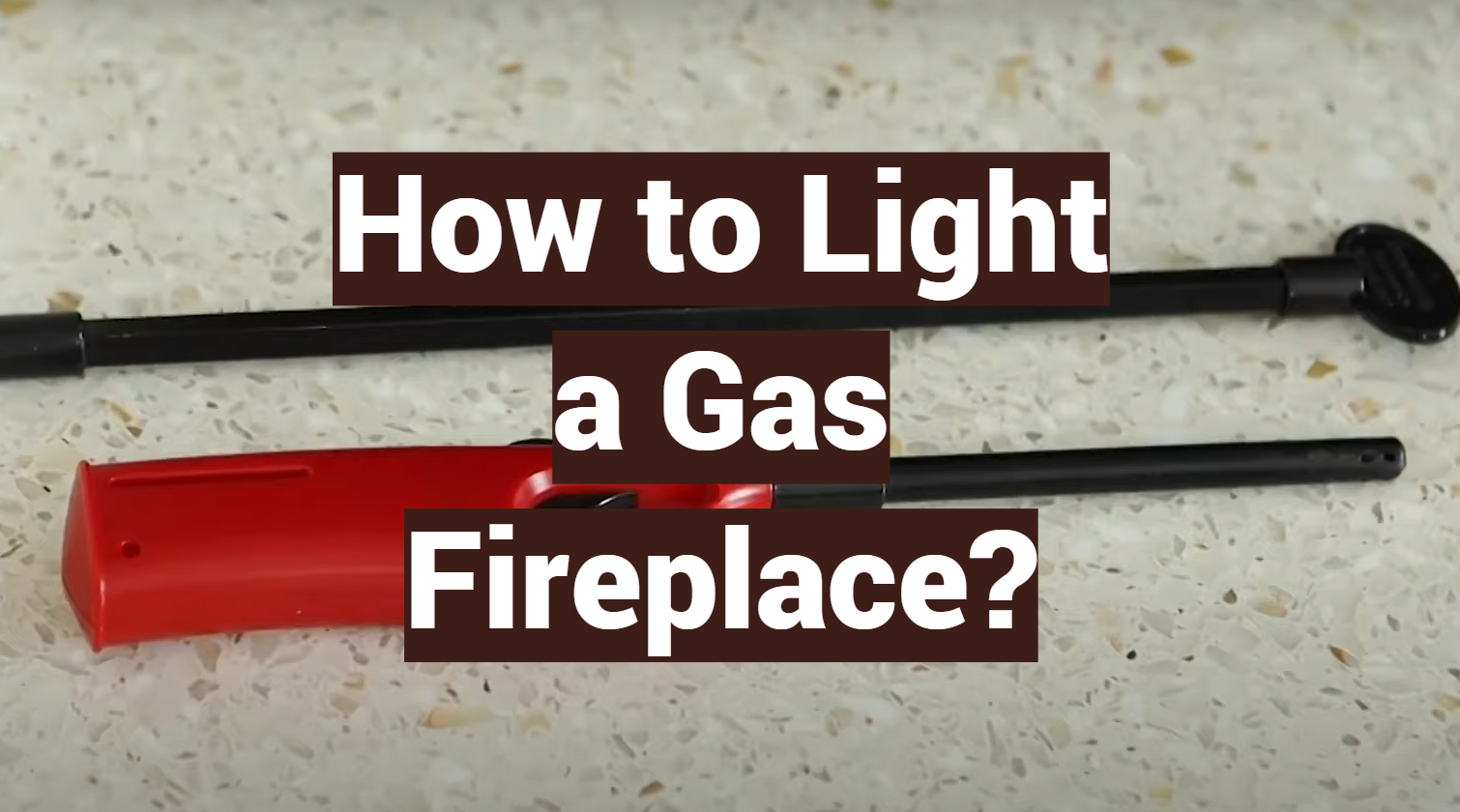



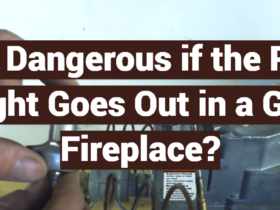




Leave a Review